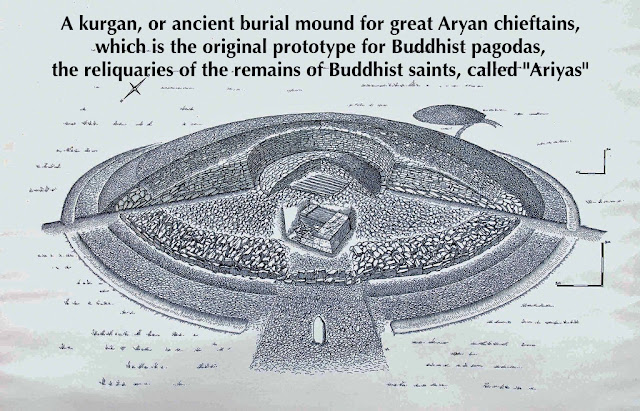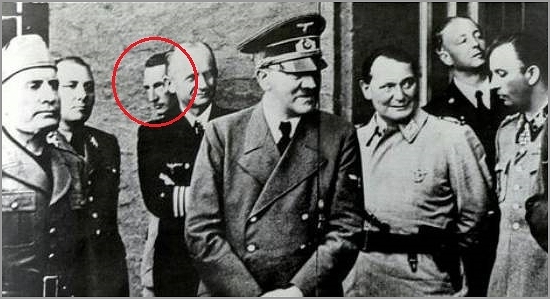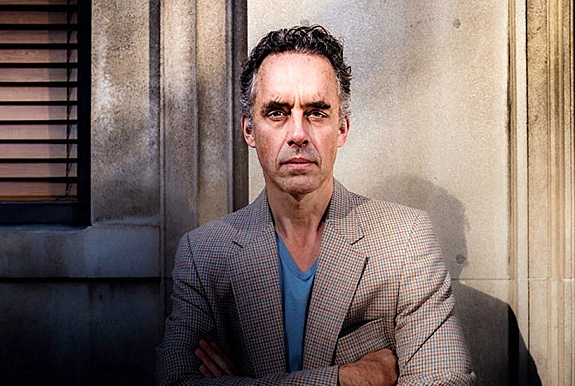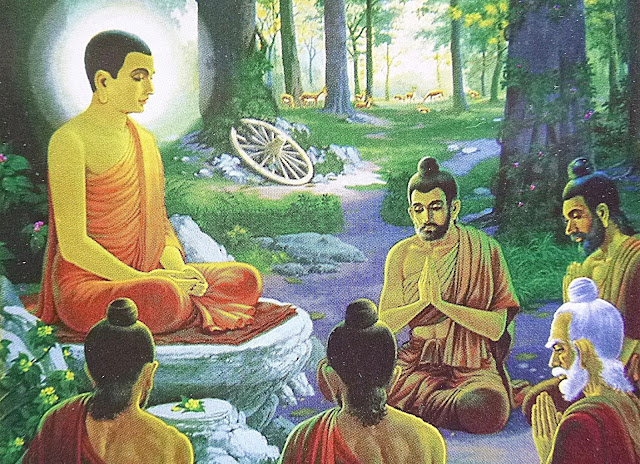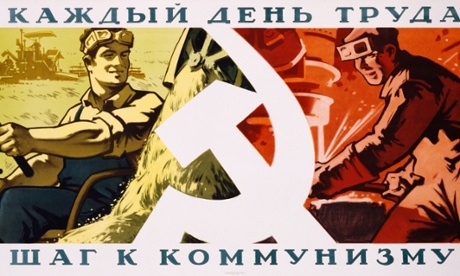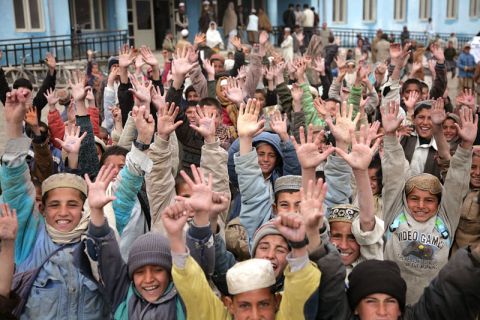05/19/20
Filed under:
General
Posted by:
site admin @ 8:06 am
COVID-19 Coronavirus Pandemic Recovered:1,958,525
Countries and territories without any cases of COVID-19
- 1. Comoros,
- 2. North Korea,
- 3. Yemen,
- 4. The Federated States of Micronesia,
- 5. Kiribati,
- 6. Solomon Islands,
- 7. The Cook Islands,
- 8. Micronesia,
- 9. Tonga,
- 10. The Marshall Islands Palau,
- 11. American Samoa,
- 12. South Georgia
- 13. South Sandwich Islands.
- 14.Saint Helena.
Europe
15. Aland Islands
16.Svalbard
-
Jan Mayen Islands
-
Latin America
Africa
British Indian Ocean Territory
French Southern Territories
Lesotho
-
Oceania
-
Christmas Island
Cocos (Keeling) Islands
Heard Island
-
McDonald Islands
Niue
Norfolk Island
Pitcairn
Solomon Islands
Tokelau
United States Minor Outlying Islands
Wallis and Futuna Islands
- Tajikistan,
- Turkmenistan,
- Tuvalu,
- Vanuatu
Are all well, happy and secure!
They are calm, quiet, alert and attentive with their wisdom,
having an equanimity mind not reacting to good and bad thoughts
with a clear understanding that everything is changing!
including
all the Presidents, Prime Ministers, Parlimentarians,
Legislators,Ministers, MPs, MLAs, Political ruling and opposition Party
members, Chief Justices, Judges, Chief Election Commission members Media
persons who were not affected by COVID-19 not wearing face masks but
still alive and who are more deadliest than COVID-19
International
World Organisations including WHO, UNO, Human Rights Commission, All
Chief Justices, Election Commissioners, All Opposition parties Social
Media must unite for
Discovery of Awakened with Awareness Universe
For
the Welfare, Happiness and Peace for all Sentient and Non-Sentient
Beings and for them to Attain Eternal Bliss as Final Goal.
1. All EVMs/VVPATs must be replaced with Ballot Papers to save Democracy, Liberty, Equality, and Fraternity.
2.
Whether COVID-19 Virus is natural or a Lab Created One.The affected and
dead peoples’ names and addresses must be made public.
3. Signs and symptoms of the Virus
While it’s not known who got what from whom, whether the virus was even
spread simply having a cold at that time, the case has shaken the
community even if it didn’t “qualify” for a test after showing runny
nose which was listed as a symptom of COVID-19 and advises anyone
feeling unwell to stay home.
Major Cause of Death in COVID-19 is Thrombosis, Not Pneumonia !
It seems that the disease is being attacked wrongly worldwide.
Thanks to autopsies performed by the Italians … it has been shown that
it is not pneumonia … but it is: disseminated intravascular coagulation
(thrombosis).
Therefore, the way to fight it is with antibiotics, antivirals, anti-inflammatories and anticoagulants.
The protocols are being changed here since !
According to valuable information from Italian pathologists, ventilators and intensive care units were never needed.
If this is true for all cases, it is about to be resolved it earlier than expected.
4. https://theprint.in/…/modis-poorly-planned-lockdown…/388056/
Murderer
of democratic institutions (Modi)’s poorly planned 45 days curfew didn’t
save us from COVID-19, but killed economy after gobbling the Master Key
by tampering the fraud EVMs/VVPATs and won elections on behalf of Rowdy
rakshasa Swayam Sevaks (RSS) foreigners from Bene Israel who must be
forced to quit Prabuddha Bharat along with their own mother’s flesh
eaters, stooges, slaves and boot lickers.
With typically shoddy execution, Modi’s national curfew could starve to death.
It is
important to note that countries that have so far done a relatively good
job of containing the COVID-19 pandemic have refrained from imposing a
complete, nation-wide, curfew-like lockdown. These
include Singapore, Taiwan, Germany, and Turkey. Even China, where it all
started, placed only the Hubei province under complete curfew, not the
whole country.
Modi has
put 1.3 billion people under a curfew. Since the authorities are using
the word ‘curfew’ in the context of issuing passes, it is fair to call
it a national curfew.
Modi does
not have the capacity to think through the details of planning and
execution. This is turning out to be another demonetisation, with the
typical Modi problem of mistaking theatrics for achievement.
If we
survive the pandemic, we won’t survive the impending economic collapse.
The economy isn’t on Modi’s radar either. He won a national election
despite disastrous economic policies that gave us a 45
year-high unemployment rate. Why should he worry about the economy? Names list as to how many employees and migrant and daily
workers lost their jobs because of the permanent curfew laid by
governments in the name of COVID-19 and suffering with hunger.
Demonetisation and GST resulted in killing demand, and this poorly
planned national curfew will kill supply chains. We’ll be left with the
great Indian discovery, the zero.
Modi announced a national curfew with little notice. He addressed India
at 8 pm, and the curfew came into force at midnight. Just like
demonetisation. Why couldn’t he have given some notice? Why couldn’t he
have done his TV address at 8 am? Maximising prime time attention, you
see.
The home
ministry issued a list of exemptions but try explaining them to the cops
on the street. The police is doing what it loves to do the most:
beating up Indians with lathis. Meanwhile, lakhs
of trucks are stranded on state borders. Supply chains for the most
essential items have been disrupted, including medicines, milk,
groceries, food and newspaper deliveries.
Nobody in
the Modi’s office seems to be aware of any such thing as crop
harvesting, or the Rabi season, as farmers wonder how they’ll do it amid
this national curfew. Only Modi can manage to be so
clever as to
disrupt the country’s medical supply chain while fighting a
pandemic.Modi is the only major world leader who has not yet announced a
financial package. In his first speech, he said the finance minister
will head a committee, but some in the finance ministry said they heard
of this committee from the Modi’s speech. He did announce Rs 15,000
crore extra to meet the health expenditure arising out of the COVID-19
crisis — that is Rs 5,000 crore less than the amount of money he has
kept aside for his narcissistic and unnecessary project of rebuilding
the Central Vista of New Delhi.
At this
rate, more might die of hunger than of COVID-19. Modi’s poor
administrative skills, zero attention span for details, spell disaster
for this crisis. In a few weeks, we might find ourselves overwhelmed
with an epidemic in defiance of official numbers, while the economy
might start looking like the 1980s.
With a request
for partnership with allyour esteemed organisations for Discovery of
Awakened One with Awareness Universe (DAOAU) for the welfare, happiness
and peace for all societies.
From
KUSHINARA NIBBANA BHUMI PAGODA
Analytic Insight Net - FREE Online Tipiṭaka Law Research & Practice
University in
116 CLASSICAL LANGUAGES in Awakened One with Awareness’s own Words
through
http://sarvajan.ambedkar.org
at WHITE HOME
668, 5A main Road, 8th Cross, HAL 3rd
Stage, Puniya Bhoomi Bengaluru- Magadhi Karnataka State -Prabuddha Bharat
Last updated: May 20, 2020, 03:31 GMT
Coronavirus Cases:4,986,681 Deaths 324,912
Awakened One with Awareness perspective of good governance-
Democratic governance
Shadow man on COVID-19, US story
Major Cause of Death in COVID-19 is Thrombosis, Not Pneumonia
The CDC says they don’t recommend people wear masks to prevent transmitting the virus if you do not have symptoms.
Dhammacakkappavattana Sutta
1. Dasa raja dhamma
2. kusala.
3. Kuutadanta Sutta dana
4. priyavacana
5. artha cariya
6. samanatmata
7. Samyutta Nikayaarya
” or
“ariyasammutideva
8. Agganna Sutta
9. Majjima Nikaya
10. arya” or “ariya
sammutideva
Digha Nikaya
Maha Sudassana
Dittadhammikatthasamvattanika-dhamma
Canon Sutta
Pali Canon and Suttapitaka
Iddhipada
Lokiyadhamma and Lokuttaradhamma
Brahmavihàra
Sangahavatthu
Nathakaranadhamma
Saraniyadhamma
Adhipateyya Dithadhammikattha
dukkha
anicca
anatta
Samsara
Cakkamatti Sihananda Sutta,
Kutadanta Sutta
Chandagati
Dosagati
Mohagati
Bhayagati
Yoniso manasikara
BrahmavihàraSangahavatthu
Nathakaranadhamma
SaraniyadhammaAdhipateyya
Dithadhammikattha
Mara
Law of Kamma
Vasettha Sutta in Majjhima Nikaya
Ambattha Sutta in Digha Nikaya
Assamedha
Sassamedha
Naramedha
Purisamedha
Sammapasa
Vajapeyya
Niraggala
Sila
Samadhi
Panna
Samma-sankappa
Sigalovada Sutta
Brahmajala Sutta
Digha Nikaya (Mahaparinibbana-sutta
dhammamahamatras
Lord Awakened One with Awareness said (in Pali),
‘Na jacca vasalo hoti na jacca hoti brahmano.
Kammuna vasalo hoti kammuna hoti brahmano.’
(Not by his birth man is an outcaste or a Brahman;
Only by his own Kamma man becomes an outcaste or a Brahman.)
Lord Awakened One with Araeness said,
‘Be hurry, O Bhikkhus, to paddle your boat till it shall reach the other side of the river bank.’
Awakened One with awareness said
‘Suddhi asuddhi paccattam nanno nannam visodhaye’ (purity and impurity is the matter of an individual; one can, by no means, purify
another).
https://tenor.com/view/milk-and-mocha-dance-dancing-music-favorite-songs-gif-15160936
https://www.youtube.com/watch?v=m4Vr3PJPYio
“all genius all idiot”, By Svalbard Company
Svalbard Co
210 subscribers
Performers and authors:
Benjamin Smith, John Simon Wiborn, Tom Brand, Santiago Ruiz Albalate
Artistic collaboration with: Peter Jasko
Scenography: Kasper Svenstrup Hansen
Lightdesign: Zuzana Režná
Exterior eye/Acrobatic coach: Bahoz Temaux
Exterior eye: Methinee Wongtrakoon
Musical exterior eye: Mae Karthäuser
Costume: Michiel Tange van Leeuwen
Producer: Josefin Lindberg/Follow the Rabbit
Collaborative partner: Wolfgang Hoffman/Aurora Nova
Bookings: josefin@followrabbit.se
Contact: Svalbardcompany@gmail.com
Trailer made by Deadbeat Films
Category
Film & Animation
10. arya” or “ariya
https://tenor.com/view/equal-means-equal-equal-means-equal-gif-12648993
https://politicallyincorrectdharma.blogspot.com/2020/02/why-pali-word-ariya-means-noble.html
Why the Pali Word “Ariya” Means “Noble”
Whatever person, even unasked, speaks to others of his own morality
and observances, whoever even of his own accord speaks of himself—adept
ones say his is a non-Ariyan way (anariyadhammaṁ) —Duṭṭhaṭṭhaka Sutta, verse 3
Those of you who are
familiar with ancient Indian Buddhist philosophy may know that the Pali
word usually translated as “noble” is ariya; for example, the four Noble Truths are the cattāri ariya-saccāni,
and any Buddhist saint or sage who has attained at least a glimpse of
Nibbāna is called an Ariya. You may also be aware that this term is
etymologically the same as the Sanskrit word Arya, used by some
Nazi types and white nationalists, as in the Aryan Nation or the Aryan
Master Race. The purpose of what follows is to explain the connection.
The explanation extends back into remote prehistory.
Back around 5000BCE
there arose a tribe, or family of tribes, probably north of the Caucasus
Mountains and the Black and Caspian Seas, who are now referred to as
the Indo-Europeans or, in their earliest manifestations, as
Proto-Indo-Europeans. They spoke a language (or family of languages)
related to many modern ones, including English, Russian, Greek, Latin,
and Sanskrit, and many of them evidently had fair skin, blue eyes, and
blond hair. They were physically large and aggressive, had a strong
social system, were among the first to tame and ride horses, and also
some of the first to make iron weapons and tools; and they were so
successful that they spread out in all directions of the compass in a
huge series of migrations and invasions of others’ territories.
It is known that some of
the prehistoric Indo-Europeans who spread eastward into Asia called
themselves Arya, or Aria, or Ariya. These eventually invaded what is now
Iran (which is itself a corruption of the ancient word “Arian”),
Afghanistan, Pakistan, and India, along with several other
regions—including one group of Indo-Aryans who wound up ruling a nation
in northern Syria called Mitanni. The other groups of Indo-Europeans may
not have called themselves by this same name, but white nationalists in
Europe a hundred and more years ago decided to refer to all
Indo-European peoples as “Aryan,” and it remains a loose synonym for
“Indo-European.” But though it has been used as a shorter and easier
synonym, including sometimes by me, the philologists and other similar
academic authorities restrict the term “Aryan” to those tribes, now
mostly ancestors to north Indians and Iranians, who are known to have
called themselves by that name.
When the Indo-Europeans
were spreading out from their ancestral homeland, they usually were
invading territory already occupied by other people; and what often
occurred is that the Indo-European invaders would become the new ruling
class, with the subject peoples being a mix of the aboriginals and some
of the rank and file of the invading forces. This is what happened in
northern India: around approximately 1500BCE, Indo-Aryan invaders from
Bactria (approximately Afghanistan) conquered the declining Indus Valley
Civilization and set themselves up as the new overlords. This was the
origin of the notorious Indian caste system: As a rule, the chieftains
and other military leaders were set up as the Kshatriya caste, the
priests of their Vedic, Aryan polytheistic religion gave rise to the
lineage of Brahmins, the common men among the invaders became the
ancestors of the Vaishya caste consisting
mainly of landowners and merchants, and the stereotypically small,
dark-skinned, snub-nosed aboriginals (as they are described in the Rig
Veda) became the ancestors of the Shudra peasant caste, as well as the
outcastes lying outside the formal social system.
There was of course a
certain amount of social mobility, so that low-caste people of some
consequence or merit would be raised up in the social hierarchy, and
some high-caste ones could be cast down, for example by a Brahman
disgracing himself through some scandalous deed like eating the wrong
kind of meat. I have read that it was not uncommon for high-ranking
non-Aryans, like the leaders of formidable aboriginal tribes, to be
given honorary Kshatriya status as a reward for collaborating with the
new ruling class. Also, judging from the fact that only a relative few
of the higher-caste Hindus of today look European (a very few Brahmins
still have blue eyes, for example), thousands of years of high-caste
Aryans mating with the prettiest Dravidian girls, etc., has resulted in
northern India having a population of what some white nationalists would
call “mud bloods.”
So anyhow, the Aryas being the ruling class, Arya, or Ariya
in Pali, came to have the meaning of “noble,” because the social
nobility, the leaders, were literally Aryan, while the common masses
generally were not. The term Arya came to be associated with European
looks, and also with genteel manners and civilized “good breeding.” It
came to be a term of praise for what was considered to be superior; and
it retained that meaning as the older meaning began to be lost in
obscurity, as the Indians increasingly believed that they sprang
directly from Indian soil and were never a conquering tribe of barbarian
invaders. Finally the word became something like the word “gentle” in
English: it began with the Latin word gens, signifying an ancient
or illustrious family, and later came to mean “refined,”
“well-mannered” like a high-bred person, until the original meaning was
forgotten, and the word had evolved to mean something quite different.
In the ancient Pali texts one may occasionally encounter the word ariya
in the older sense of “Indo-European,” for example in the description
of some hill tribe; but in Buddhism it came to mean “noble” in the sense
of “civilized,” “socially advanced,” even “praiseworthy.” And so,
ancient Buddhism adopting preexisting terms for its new philosophical
system, the word ariya was adopted to describe anything spiritually or ethically advanced. Nobility of ancestry mutated into nobility of demeanor. And there it is.
A similar case of old words getting new Buddhist meanings is the term arahant,
which often isn’t translated at all in English renderings. For
Theravada Buddhists the meaning is a person who is fully enlightened,
including the Buddha himself. But the word literally means “worthy,” or “worthy one.” I have read that magistrates and other political bigshots in ancient India were called araha,
and so it became a generic word of praise or glorification. Even so,
the original meaning of the root of the word continued to have its old
meaning, hence Pali terms like daṇḍāraho, “worthy of the stick,” i.e. “worthy of punishment.” But maybe more on word etymologies some other time.

https://www.un.org/en/contact-us/index.html
Wish
to know with names list as to how many employees and migrant and daily
workers lost their jobs because of the permanent curfew laid by
governments in the name of COVID-19 and suffering with hunger.
https://www.un.org/en/sections/what-we-do/protect-human-rights/

The term “human rights” was mentioned seven times in the UN’s founding Charter, making the promotion and protection of human rights a key purpose and guiding principle of the Organization. In 1948, the Universal Declaration of Human Rights
brought human rights into the realm of international law. Since then,
the Organization has diligently protected human rights through legal
instruments and on-the-ground activities.
Students
at Butkhak High School in Kabul, Afghanistan, cheer in unison on the
last day of Global Action Week, an international campaign advocating
free, quality education for all.
How does the UN promote and protect human rights?
High Commissioner for Human Rights
The Office of the UN High Commissioner for Human Rights (OHCHR) has lead responsibility in the UN system for the promotion and protection of human rights.
The office supports the human rights components of peacekeeping
missions in several countries, and has many country and regional offices
and centres. The High Commissioner for Human Rights regularly comments on human rights situations in the world and has the authority to investigate situations and issue reports on them.
Human Rights Council
The Human Rights Council,
established in 2006, replaced the 60-year-old UN Commission on Human
Rights as the key independent UN intergovernmental body responsible for
human rights.
Human Rights Treaty Bodies
The human rights treaty bodies are committees of independent experts that monitor implementation of the core international human rights treaties
Special Procedures
The special procedures
of the Human Rights Council are prominent, independent experts working
on a voluntary basis, who examine, monitor, publicly report and advise
on human rights from a thematic or country-specific perspective.
UNDG-HRM
The UN Development Group’s Human Rights Mainstreaming Mechanism (UNDG-HRM) advances human rights mainstreaming efforts within the UN development system.
Special Advisers on the Prevention of Genocide and the Responsibility to Protect
The Special Adviser on the Prevention of Genocide acts
as a catalyst to raise awareness of the causes and dynamics of
genocide, to alert relevant actors where there is a risk of genocide,
and to advocate and mobilize for appropriate action; the Special Adviser on the Responsibility to Protect leads the conceptual, political, institutional and operational development of the Responsibility to Protect.
What legal instruments help the UN protect human rights?
The International Bill of Human Rights
The Universal Declaration of Human Rights (1948) was the first legal document protecting universal human rights. Together with the International Covenant on Civil and Political Rights and the International Covenant on Economic, Social and Cultural Rights,
the three instruments form the so-called International Bill of Human
Rights. A series of international human rights treaties and other
instruments adopted since 1945 have expanded the body of international human rights law.
Democracy
Democracy,
based on the rule of law, is ultimately a means to achieve
international peace and security, economic and social progress and
development, and respect for human rights – the three pillars of the
United Nations mission as set forth in the UN Charter. At the 2005 World
Summit, all the world’s governments reaffirmed “that democracy is a
universal value based on the freely expressed will of people to
determine their own political, economic, social and cultural systems and
their full participation in all aspects of their lives” and stressed
“that democracy, development and respect for all human rights and
fundamental freedoms are interdependent and mutually reinforcing”.
Democratic principles are woven throughout the normative fabric of the
United Nations. The 2009 Guidance Note on Democracy of the Secretary-General
sets out the United Nations framework for democracy based on universal
principles, norms and standards and commits the Organization to
principled, coherent and consistent action in support of democracy.
What other UN offices and bodies are responsible for protecting human rights?
Security Council
The UN Security Council,
at times, deals with grave human rights violations, often in conflict
areas. The UN Charter gives the Security Council the authority to
investigate and mediate, dispatch a mission, appoint special envoys, or
request the Secretary-General to use his good offices. The Security
Council may issue a ceasefire directive, dispatch military observers or a
peacekeeping force. If this does not work, the Security Council can
opt for enforcement measures, such as economic sanctions, arms embargos,
financial penalties and restrictions, travel bans, the severance of
diplomatic relations, a blockade, or even collective military action.
Third Committee of the General Assembly
The General Assembly’s Third Committee
(Social, Humanitarian and Cultural) examines a range of issues,
including human rights questions. The Committee also discusses
questions relating to the advancement of women, the protection of
children, indigenous issues, the treatment of refugees, the promotion of
fundamental freedoms through the elimination of racism and racial
discrimination, and the right to self-determination. The Committee also
addresses important social development questions.
Various Other UN Bodies
Different
intergovernmental bodies and interdepartmental mechanisms based at the
United Nations headquarters in New York, as well as the United Nations Secretary-General, address a range of human rights issues. The General Assembly, the Economic and Social Council (ECOSOC) and their subsidiary organs make policy decisions and recommendations to Member States, the United Nations system and other actors. The United Nations Permanent Forum on Indigenous Issues
(UNPFII), an advisory body to the Economic and Social Council, has a
mandate to discuss indigenous issues, including human rights. The Office
of the High Commissioner for Human Rights interacts with and provides
advice and support on human rights issues to these bodies and
mechanisms. The Office also works to mainstream human rights in all
areas of work of the Organization, including development, peace and
security, peacekeeping and humanitarian affairs. Human rights issues are also addressed in the context of the post-conflict UN peacebuilding support activities
Secretary-General
The Secretary-General appoints special representatives, who advocate against major human rights violations:
The ‘Human Rights Up Front’ Initiative is
an initiative by the UN Secretary-General to ensure the UN system takes
early and effective action, as mandated by the Charter and UN
resolutions, to prevent or respond to serious and large-scale violations
of human rights or international humanitarian law. The initiative
underlines a shared responsibility among the various UN entities to work
together to address such violations. HRuF seeks to achieve this by
effecting change at three levels: cultural, operational and political.
These changes are gradually transforming the way the UN understands its
responsibilities and implements them. The initiative has been
progressively rolled-out since late 2013. Through various presentations,
letters and policy documents, the Secretary-General and Deputy
Secretary-General have presented HRuF to the General Assembly and to
staff and UN system leaders.
On 19 January 2018, Secretary-General António Guterres established the International Commission of Inquiry envisioned by the Agreement on Peace and Reconciliation in Mali.
He appointed Lena Sundh (Sweden), Vinod Boolell (Mauritius) and Simon
Munzu (Cameroon) to serve as Commissioners and selected Ms. Sundh as
Chair. Established at the request of the signatory parties to the
Agreement, the Commission of Inquiry will advance national
reconciliation and support the Malian authorities’ efforts in the fight
against impunity. The Commissioners, who are serving in their personal
capacities, will investigate serious violations of international human
rights and humanitarian law committed in Mali since January 2012 and
submit a report to the Secretary General on 22 October 2019.

The Highest Aspiration: A Call to Action for Human Rights
On 24 February 2020, Secretary-General António Guterres launched a Call to Action for Human Rights. “Human rights are our ultimate tool to help societies grow in freedom,” he told Member States on the opening day of the UN Human Rights Council’s 43rd session in
Geneva, as he detailed a seven-point blueprint for positive change.
Echoing the call for change, High Commissioner for Human Rights Michelle Bachelet said that although threats to human rights, development and peace were on the rise, so were the practical, actionable solutions to these issues.
UN Peace Operations
Many United Nations peacekeeping operations and political and peacebuidling missions
also include the human rights-related mandates aimed at contributing to
the protection and promotion of human rights through both immediate and
long-term action; empowering the population to assert and claim their
human rights; and enabling State and other national institutions to
implement their human rights obligations and uphold the rule of law.
Human rights teams on the ground work in close cooperation and
coordination with other civilian and uniformed components of peace
operations, in particular, in relation to the protection of civilians;
addressing conflict-related sexual violence and violations against
children; and strengthening respect for human rights and the rule of law
through legal and judicial reform, security sector reform and prison
system reform.
Commission on the Status of Women
The Commission on the Status of Women
(CSW) is the principal global intergovernmental body dedicated to the
promotion of gender equality and the advancement of women. UN Women, established in 2010, serves as its Secretariat.
https://www.fundsforngos.org/featured-articles/worlds-top-ten-human-rights-organisations/
Request
for partnership with your esteemed organisation for Discovery of
Awakened One with Awareness Universe (DAOAU) for the welfare, happiness
and peace for all societies.
From
KUSHINARA NIBBANA BHUMI PAGODA
Analytic Insight Net - FREE Online Tipiṭaka Law Research & Practice
University in
116 CLASSICAL LANGUAGES in Awakened One with Awareness’s own Words
through
http://sarvajan.ambedkar.org
at WHITE HOME
668, 5A main Road, 8th Cross, HAL 3rd
Stage, Puniya Bhoomi Bengaluru- Magadhi Karnataka State -Prabuddha Bharat
Voice of All Aboriginal Awakened Ones with Awareness
All
of them are OWN MOTHER’S FLESH EATERS, Chamchas, Chelas, Slaves,
stooges, Boot Lickers of Intolerant, violent, militant, crooked,
cunning, number one terrorists of the world, ever shooting, mob
lynching, lunatic, mentally retarded foreigners thrown out from Bene
Israel, Tibet, Africa, Eastern Europe, Western Germany, Northern Europe,
South,Russia,Hungary, etc, chitpavan brahmins of Rowdy Rakshasa Swayam
Sevaks (RSS) remotely control such Bevakoof Jhoothe Psychopaths (BJP)
who abolish posts in order to appoint their own stooges and slaves.The
Murderer of democratic institutions and Master
of diluting institutions (Modi) who gobbled the Master Key by tampering
the fraud EVMs/VVPATs and won elections. All Awakened Aboriginal
societies will force the chitpavan brahmins and their slaves quit
Prabuddha Bharat. These Own other’s flesh eaters who betrayed the samaj
and left alone without even their family members following them. The
samaj did did never followed them. So they remain under the feet of the
suppressors.
“Whatever I have done, I have been able to do
after passing through crushing miseries and endless struggle all my life
and fighting with my opponents. With great difficulty I have brought
this caravan where it is seen today. Let the caravan march on despite
the hurdles that may come in its way. If my lieutenants are not able to
take the caravan ahead, they should leave it there, but in no
circumstances should they allow the caravan to go back. This is the
message to my people.”
- Dr. Babasaheb Ambedkar
Source: Last few years of Dr. Ambedkar - Nanak Chand Rattu
Four questions on this message;
1. Whom do Dr. Babasaheb Ambedkar call as “my people” ?
2. Whether “we the people” in the preamble of our Constitution and “my
people” of Dr. Babasaheb Ambedkar are the same or different ? If they
are different, in what way ?
3. What is “the caravan” of Dr. Babasaheb Ambedkar in the above message?
4. What is “the path and destination” of the caravan of Dr. Babasaheb Ambedkar ?
Leave a Reply



